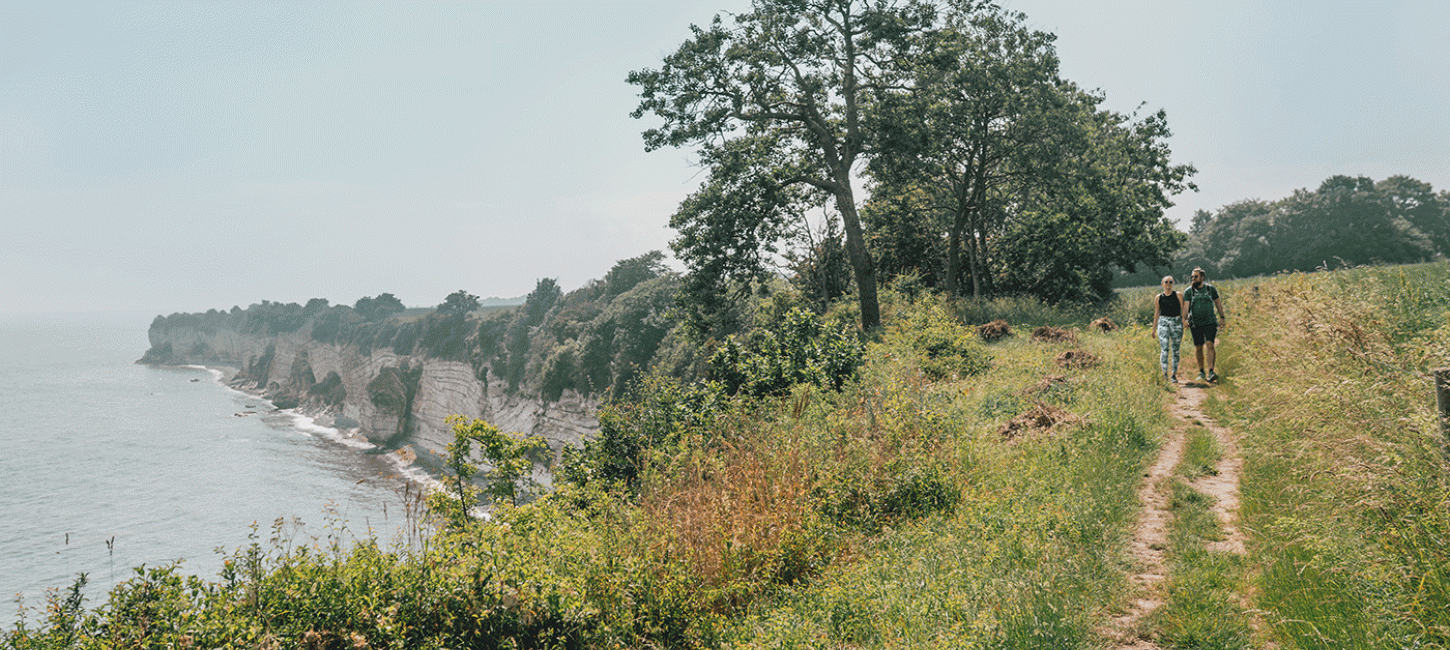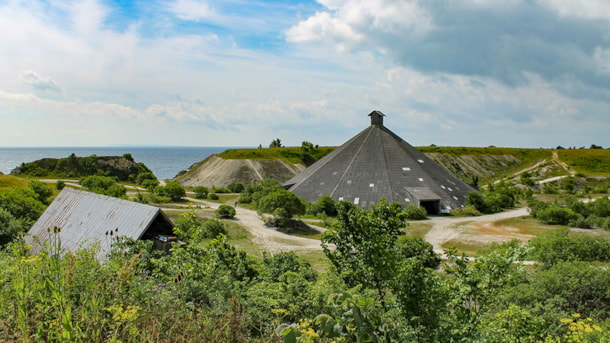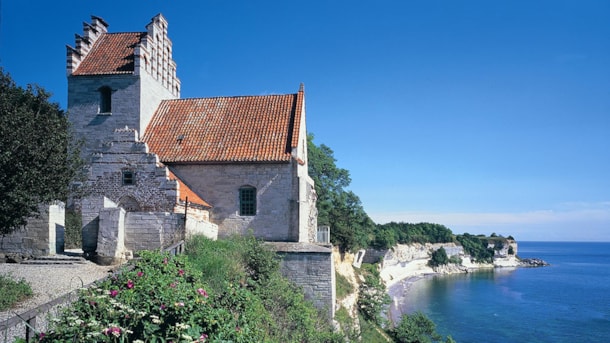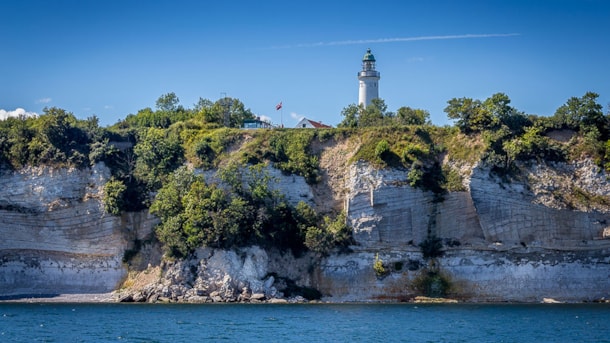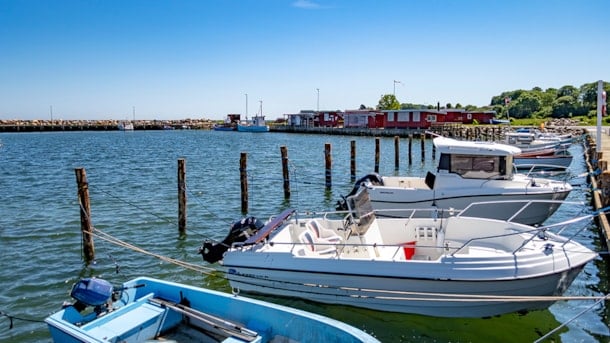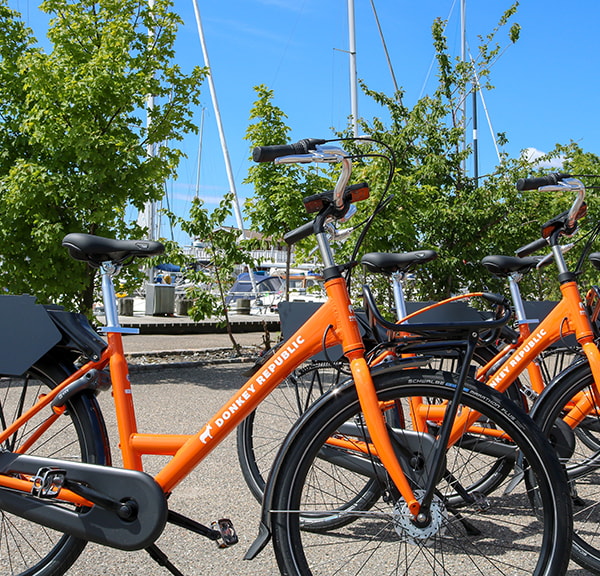Trampestien and Stevns Klint are two pieces of history themselves, but along the scenic hiking trail, you can see many more pieces of local Danish history.
At Højerup stands an old church, which was built around the year 1250, but slowly over time the edge of the cliff began to move further and further inland. Over time, the sea ate more and more of the cliff, so in 1910 the use of the church was abandoned, and in 1928 the choir fell into the water. Today, there is a formidable viewing post where the choir once stood.
Long before Stevns Klint was a UNESCO World Heritage site, it was used as a natural resource. On Trampestien, you may pass by the decommissioned Boesdal limestone quarry. The quarry was open between the years of 1914 and 1978. The quarry closed in 1978, but in 2022, life was revived in the area when Stevns Klint Experience was launched. The experience center disseminates knowledge about the cliff and the prehistoric life that once existed where the center now stands, and which you can also find in the cliff. With its interactive exhibition, there is something to be explored for both adults and children.
At the other end of Trampestien, you can come up close to the former military base, Stevnsfortet. Stevnsfortet is located between Rødvig and Højerup, and is carved into Stevns Klint. Fortet was built between 1950 and 1953 and was Denmark's fist against the east during the cold war. For 40 years, the place was manned and ready for combat, and there were still personnel on the base in the year 2000, when it was closed down. The fort was reopened to the public in 2008, and today it is a museum, where you can virtually step directly into the Cold War.
